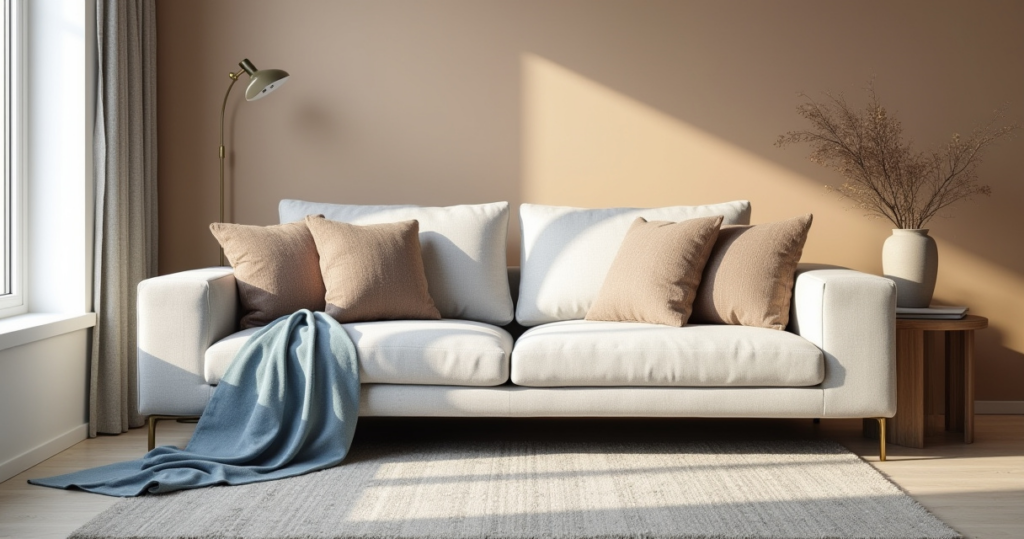Can we talk about something that drives me crazy? It’s what I call the “sad beige wall” syndrome. You walk into someone’s home—a smart, interesting person with stories to tell—and their living room walls are either completely bare or have one generic, store-bought canvas that just “matches the couch.” It’s a huge missed opportunity. Your walls aren’t just there to hold up the ceiling. They’re a map of your life, a place for conversation.
What truly matters is turning those blank surfaces into a reflection of you. Not a trend from a magazine, but a story that’s deeply, authentically yours. The noise is all that pressure to have a perfect, “Pinterest-ready” room overnight. The real secret? Building it over time, with pieces that have meaning. I learned this the hard way, trying to decorate my first apartment. I bought a bunch of fast-fashion art that felt hollow in a month. It wasn’t until I started incorporating pieces that spoke to my own story—a delicate Polish wycinanki (paper cutting) next to a modern Chinese ink print—that my space started to feel like a home. It’s about creating a dialogue between objects, between cultures, and between the past and the present.
Foundational Planning and Vision Setting (Part 1)
This first part is what I call the “soul-searching” phase. Before you pick up a hammer or even browse a single website, you have to get quiet and listen to your space. It’s not about measuring tape (yet); it’s about asking your home, and yourself, what story you want these walls to tell. This is the foundation that makes every other choice feel right.
1. Determine Your Living Room’s Existing Aesthetic and Color Palette
Forget design-speak for a minute. Just look around. What do you see? Is your furniture clean and modern, or cozy and a bit worn-in? What are the colors you already live with? So many people buy art in a vacuum, then get it home and realize it clashes with the very soul of the room. The common advice is to buy things that “match,” but that’s such BS. It’s not about matching; it’s about harmonizing.
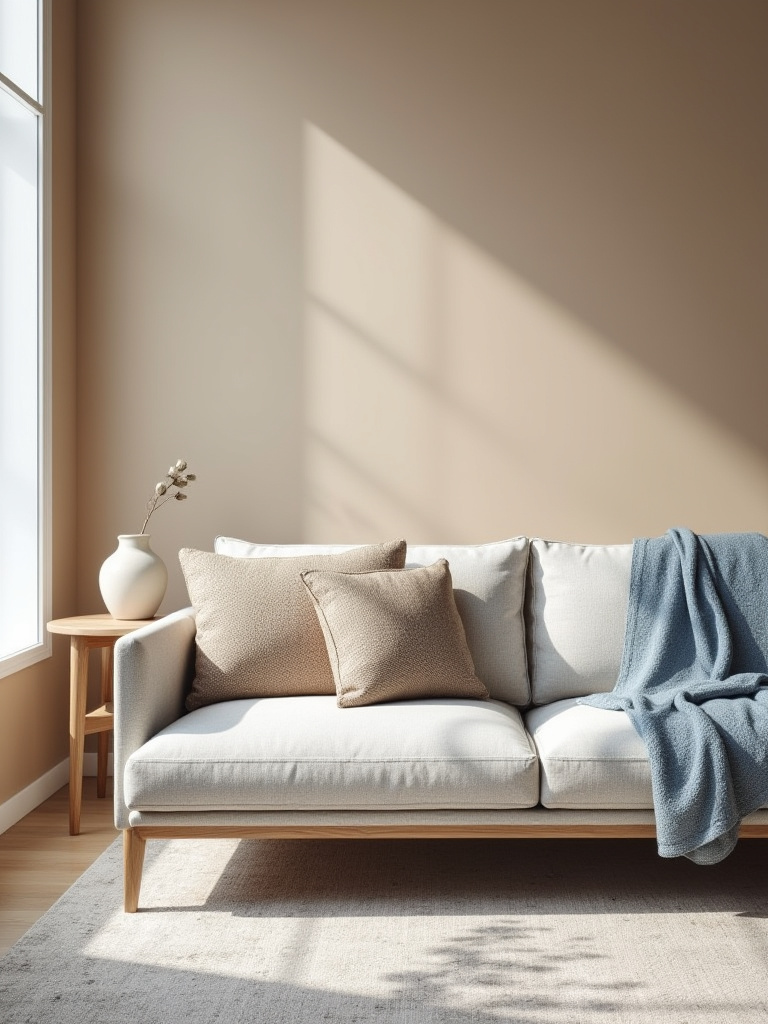
I once worked with a client who had a beautiful, serene living room with clean lines, inspired by Scandinavian design. She bought a loud, frantic piece of abstract art because it was trendy. It felt like a guest screaming at a quiet dinner party. The shortcut I wish I’d known earlier is to take a photo of your room and the piece you’re considering, and just look at them together on your phone. Does it feel like they’re having a good conversation? Or are they arguing? Trust that gut feeling.
2. Map Out Your Wall Space for Optimal Layout and Scale
Okay, now we can talk about measuring tape. This step saves you from what I call “wall regret”—those extra nail holes from guessing where something should go. Scale is everything. That tiny print you loved at the market might look like a postage stamp on the vast wall over your sofa, and that massive mirror might make your cozy room feel like a funhouse.
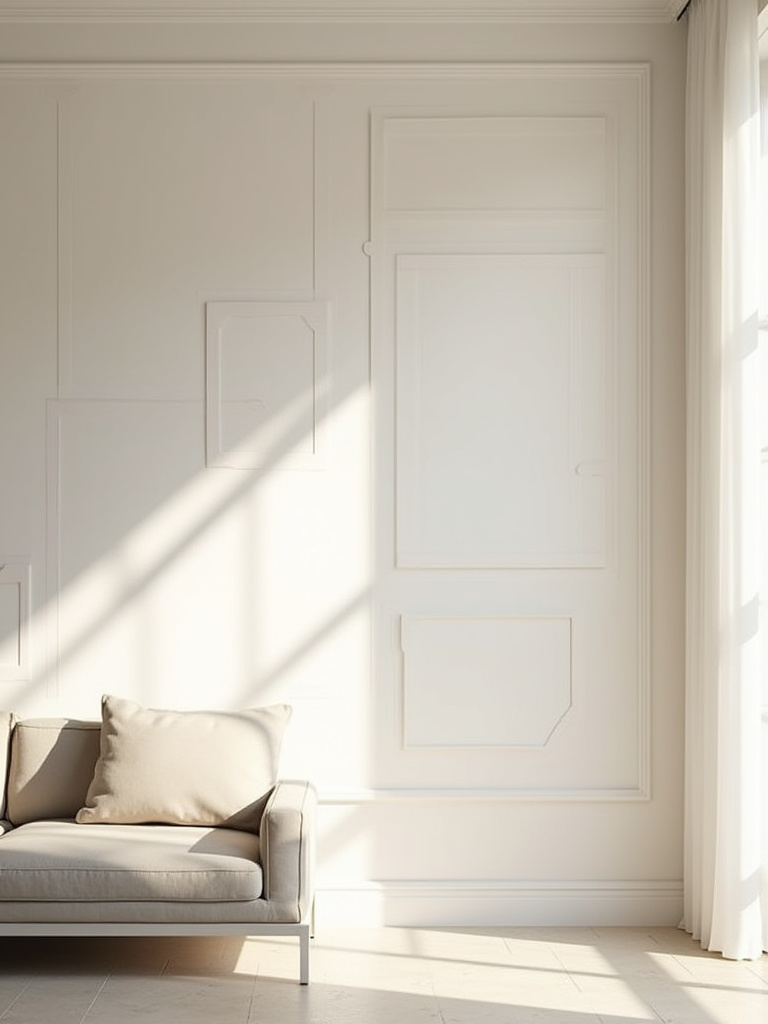
A client of mine once fell in love with a huge, expensive painting. We mapped it out on her wall with painter’s tape, cutting a template to the exact size. The tape was an inch from her doorway on one side and the window on the other. It was suffocating. Seeing that blue tape outline saved her thousands of dollars and a massive mistake. Always, always mock it up first. It’s the single best shortcut to getting placement right without a single regret.
3. Establish a Clear Budget to Guide Your Decor Choices Smartly
Let’s be real, decorating isn’t cheap, and it’s so easy to get carried away. A budget isn’t a creativity killer; it’s a framework that forces you to be more creative. When you have unlimited funds, you can just buy the most obvious, expensive thing. But when you have a number in mind, you start thinking differently. You look for an emerging artist instead of a famous one. You hunt through flea markets. You find the hidden gems.
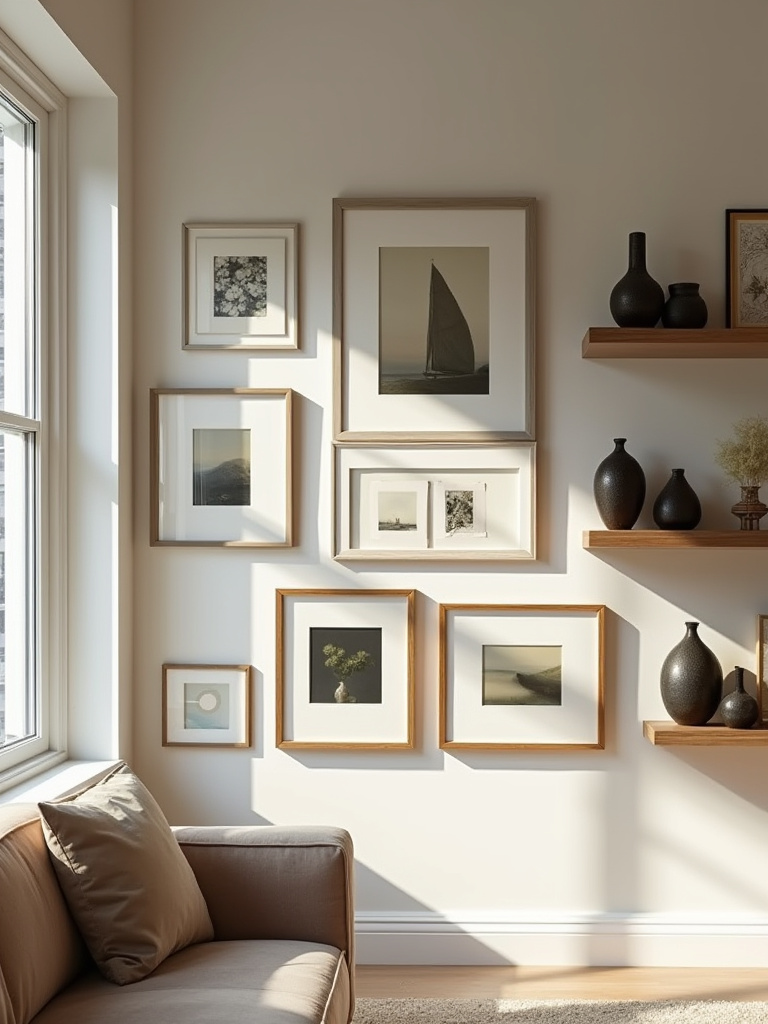
Don’t forget the hidden costs! Everyone budgets for the art but forgets about framing, shipping, and professional hanging if it’s heavy. That’s the stuff that sinks your budget. A great shortcut is the “high-low” approach. Splurge on one amazing, high-impact piece that will be your focal point, and then fill in the rest with more affordable finds, like beautiful prints, personal photographs, or even interesting textiles.
4. Identify a Central Focal Point to Anchor Your Wall Design
Every room needs a star. A focal point is simply the first place your eyes land when you walk into a room. Without one, your gaze just bounces around, and the space can feel chaotic and unsettled. It gives the room a sense of purpose and pulls everything together into a coherent story. An existing fireplace or a large window is a natural focal point, but you can create one, too.
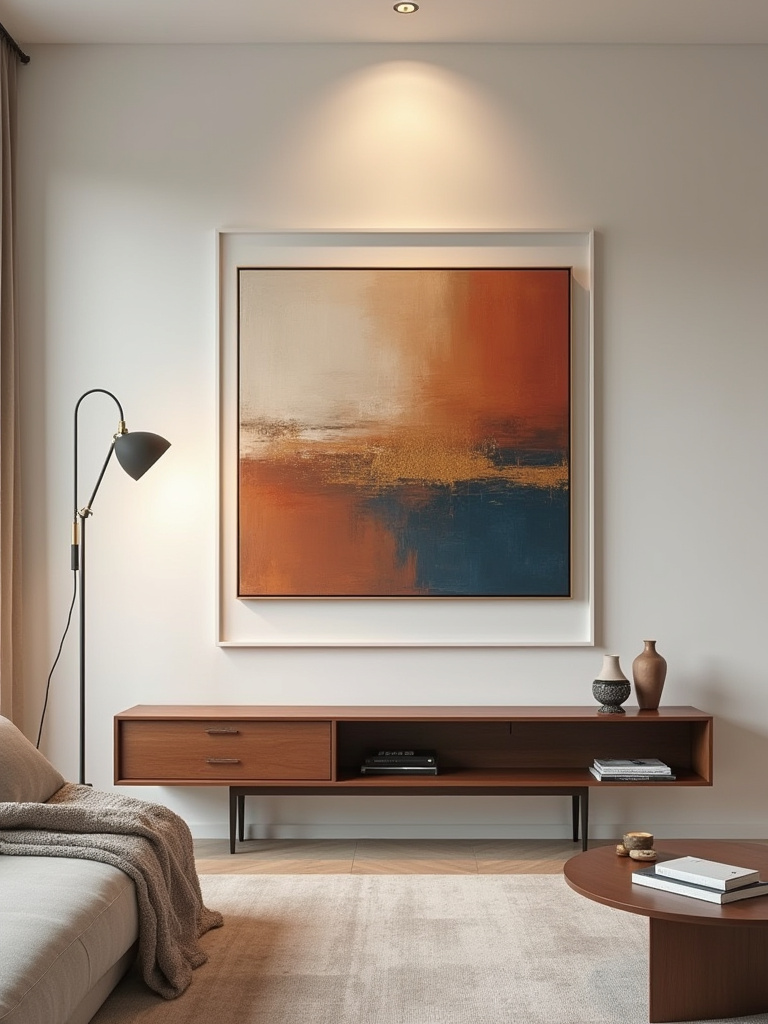
I’ve noticed a weird trend of having too many focal points competing for attention: a giant TV, a dramatic fireplace, and a massive gallery wall all yelling at once. It’s visual chaos. What really matters is picking one dominant feature to be the anchor. Then, everything else you add should be a supporting character, not another star trying to steal the scene. Think of it like a conversation—you need one main speaker and a few good listeners.
Foundational Planning and Vision Setting (Part 2)
Once you’ve done the soul-searching, it’s time to get practical. This part is about understanding the very canvas you’re working on—your walls themselves. Honoring their physical nature is a form of respect for your home, and it ensures the stories you place on them will last.
5. Assess Wall Texture and Material for Suitable Decor Options
I used to think a wall was just a wall. Then I learned the hard way that a lumpy plaster wall in an old building is nothing like the smooth drywall of a new build. That texture matters. It affects how light hits the surface, how decor hangs, and what’s even possible to install safely. That sleek floating shelf you want might not be so sleek if your wall is bumpy, and that heavy mirror will end in disaster if you don’t have the right anchors for your brick wall.
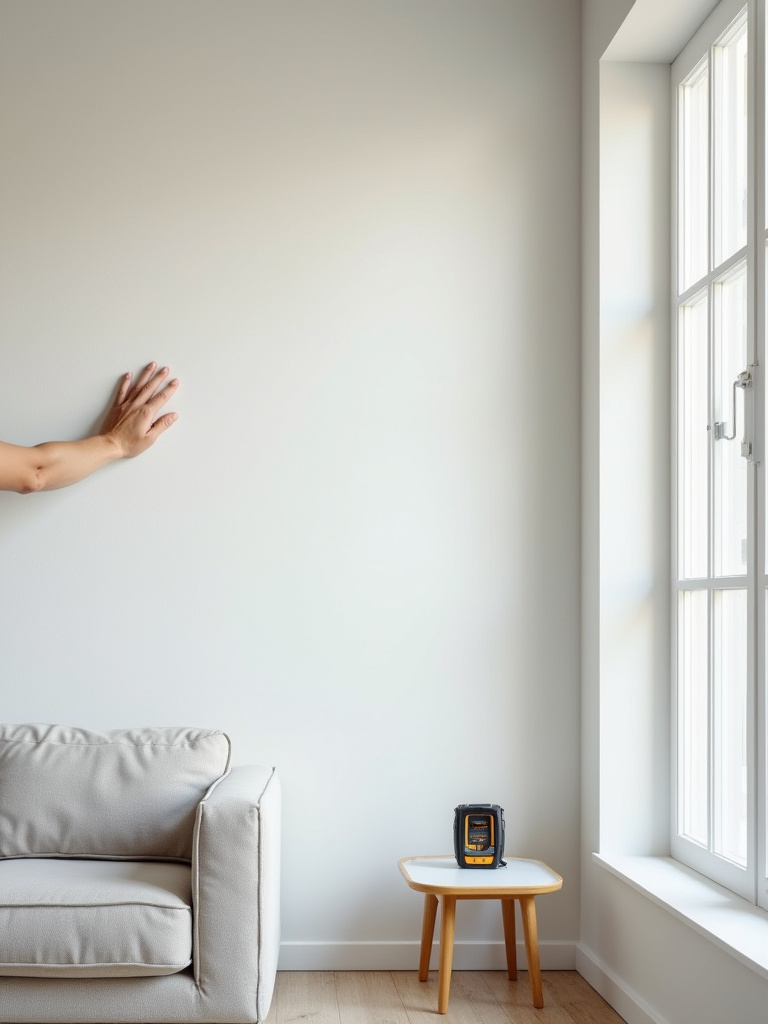
The BS advice is “just use a Command strip!” And while they’re great for some things, they are not a universal solution. One of my clients tried hanging a collection of small, framed textiles on her “orange peel” textured wall with adhesive strips. Over the course of a week, they fell off one by one, like autumn leaves. She was so frustrated. The simple shortcut is to run your hand over your wall. Get to know it. If it’s textured, plan for it. If it’s old plaster, assume you’ll need specialized anchors. A little investigation now saves a lot of heartache later.
Curating and Installing Core Decor Elements (Part 1)
Now for the best part: choosing the elements that will tell your story. Think of this as casting the main characters for your living room walls. These pieces are the heart of the design, the items that will carry the most emotional weight and visual impact.
6. Choose Statement Artwork That Reflects Your Unique Personality
A statement piece isn’t just a big piece of art; it’s the soul of your wall. It’s the one thing that says “this is me” without you having to say a word. I find people get paralyzed here, thinking they need to buy an “important” or expensive piece. That’s just noise. What really matters is that it moves you. It could be a painting from a student artist, a large-scale photograph you took on a meaningful trip, or a sculptural piece you found at a craft fair.
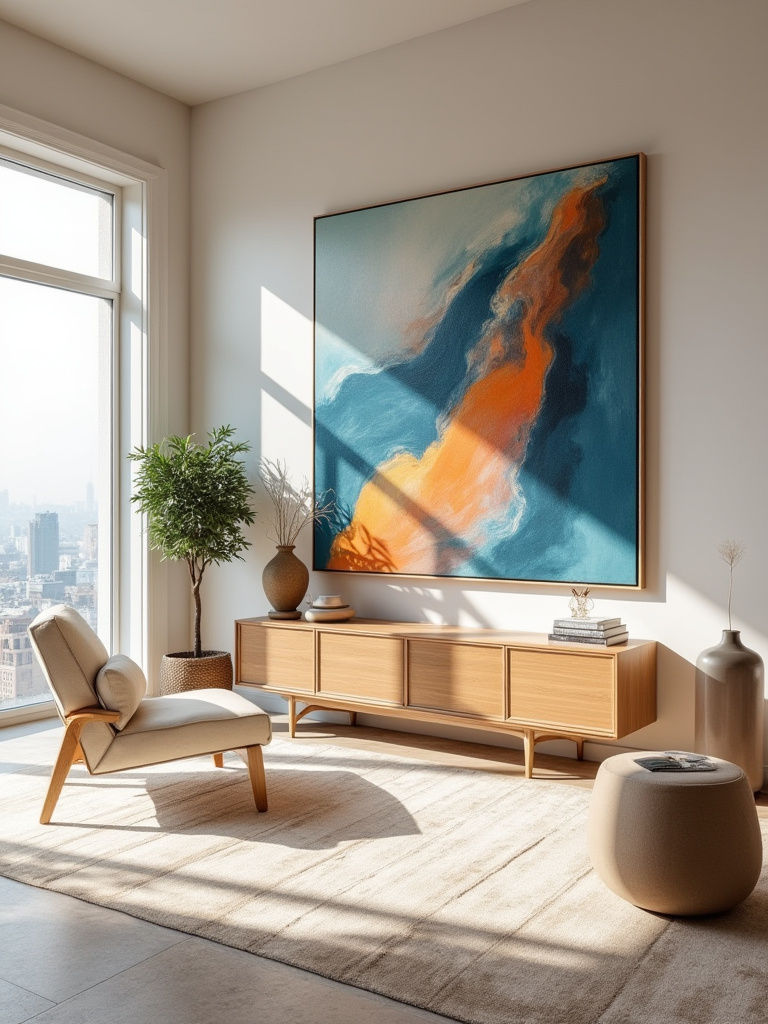
When my husband and I were blending our lives, finding our first statement piece was a journey. We finally landed on a large abstract painting with deep blues and earthy golds. For him, it felt like the landscapes of rural Poland. For me, it had the energy and balance of a Chinese calligraphy scroll. It spoke to both of our heritages without being literal. That’s what a great statement piece does—it holds multiple stories at once.
7. Create a Cohesive Gallery Wall Using Varied Frames and Artworks
Everyone says a gallery wall should look effortlessly thrown together. Here’s what actually happened when I tried that: a chaotic mess of crooked frames and mismatched junk. The secret to a beautiful, personal gallery wall isn’t effortlessness; it’s intentionality. The “effortless” look is a carefully crafted illusion built on a unifying thread.
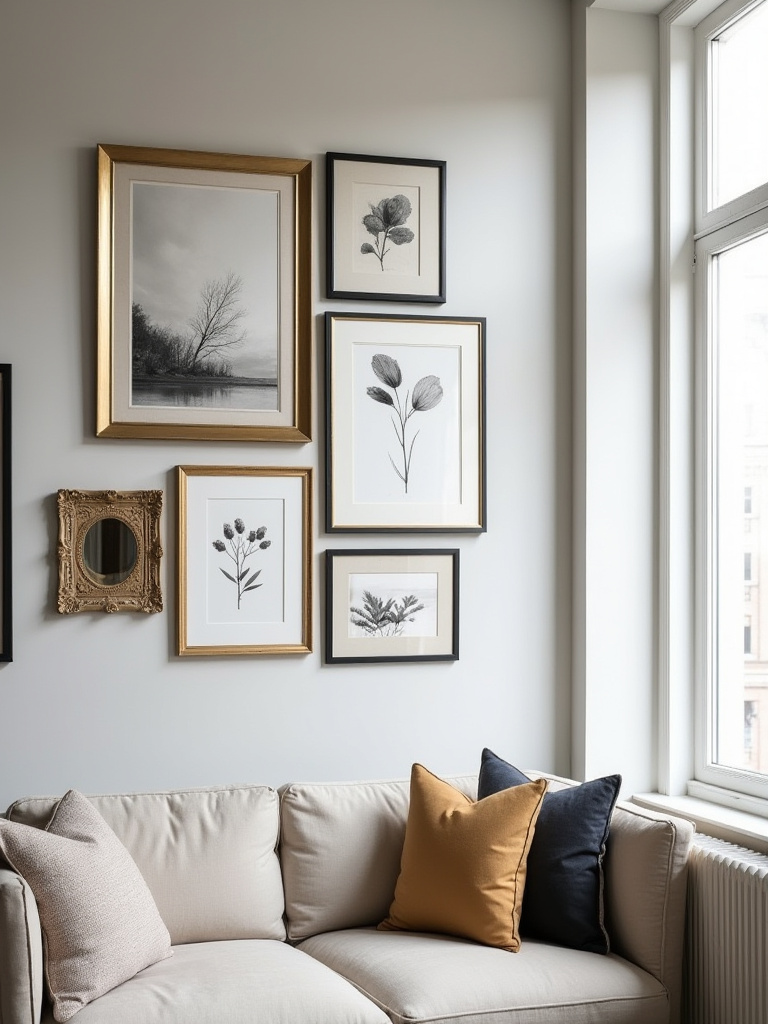
That thread can be anything: a consistent color palette in the art, a theme (like family, travel, or nature), or the material of the frames. One of my favorite shortcuts is to lay everything out on the floor first and live with it for a day or two. Move things around. Swap pieces out. When you look down and it just feels right—balanced, but not boringly symmetrical—that’s when you’re ready to start hanging. And use paper templates, always.
8. Incorporate Functional Shelving for Display and Organized Storage
I’ve noticed something about the most soulful homes: they aren’t afraid to show their “stuff.” But it’s displayed with care. Floating shelves are the perfect stage for this. They turn your collections—your books, the pottery you picked up in Mexico, the funny little sculpture your kid made—into art. They’re a living, breathing part of your story that can change and evolve.
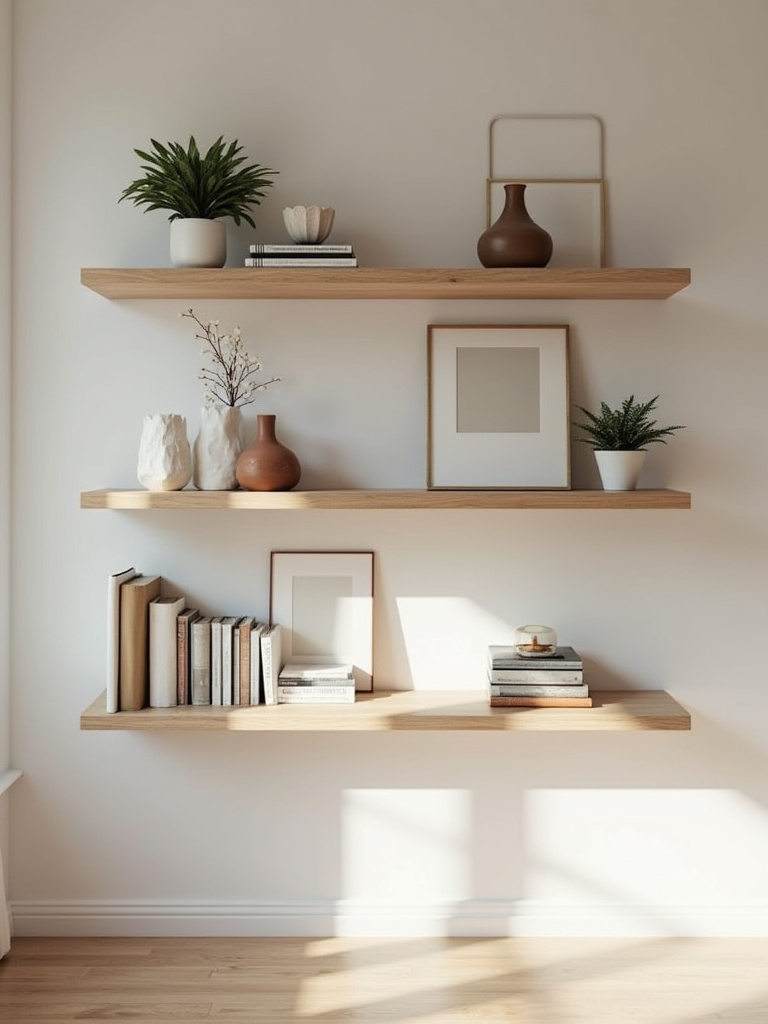
So often, shelves just become a clutter magnet. The trick is to treat them like a gallery wall. Use negative space; don’t cram every inch. Mix vertical objects (like books) with horizontal ones (like a small stack of letters) and sculptural ones (like a plant or a vase). This creates a rhythm and lets each object have its own moment. It’s the difference between a cluttered shelf and a curated display.
9. Integrate Mirrors to Amplify Light and Expand Perceived Space
A mirror is the oldest trick in the design book for a reason. It’s magic. It can double the light in a room and create the illusion of a whole other window. In Chinese design philosophy, mirrors are used to redirect energy (qi) and bring light and life into a space. They are seen as active, not passive, elements.
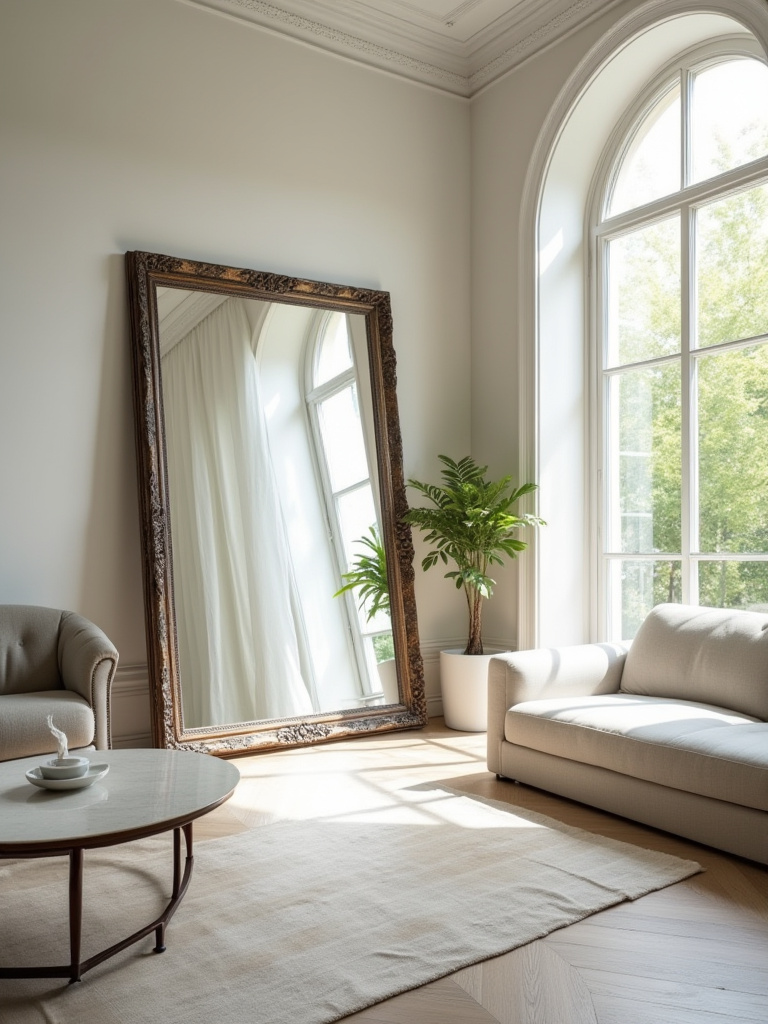
But please, don’t just hang a mirror on any old wall. What it reflects is just as important as the mirror itself. A mirror reflecting a cluttered corner will only double the clutter. A mirror reflecting a blank wall is a wasted opportunity. The shortcut is to stand where the mirror will hang and see what’s in its reflection from the main seating area. If it’s reflecting a beautiful window, a favorite piece of art, or a chandelier, you’ve found the perfect spot.
Curating and Installing Core Decor Elements (Part 2)
Continuing on our journey, let’s bring in elements that appeal to more than just our eyes. Texture and deeply personal memories add layers of warmth and comfort, turning a visually pleasing room into a truly welcoming home.
10. Hang Tapestries or Wall Hangings for Added Softness and Texture
There is a softness that textiles bring to a room that a framed print just can’t replicate. Whether it’s a modern macrame hanging, a vintage silk screen, or a traditional Polish wool kilim, a tapestry adds warmth, absorbs sound, and introduces incredible texture. In my childhood home, my babcia had a woven tapestry from the Tatra Mountains, and I remember running my fingers over its nubby texture. It made the whole room feel cozier and safer.
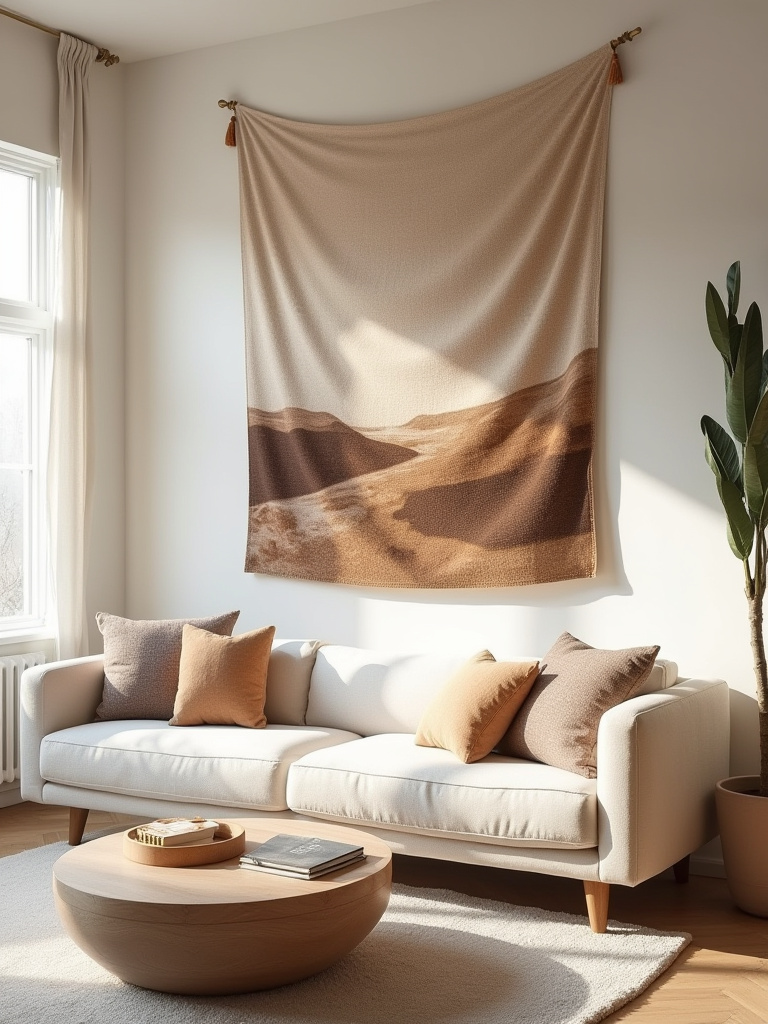
People often hang tapestries like paintings, but they have their own unique needs. A common mistake is using hardware that’s too flimsy, causing the piece to sag over time. Invest in a proper hanging rod or a sturdy wooden dowel that supports the full width evenly. This honors the craftsmanship of the piece and ensures it hangs beautifully for years to come. A well-hung textile can anchor a room with a gentle strength that is truly unique.
11. Select Themed Photo Collages to Personalize Your Walls Meaningfully
Here’s a pet peeve: a wall of random, mismatched photos in cheap frames. It’s visual chaos and doesn’t do your precious memories justice. A themed photo collage, on the other hand, is a powerful form of storytelling. By unifying photos around a single idea—a trip, a color, a person—you turn individual moments into a cohesive narrative.
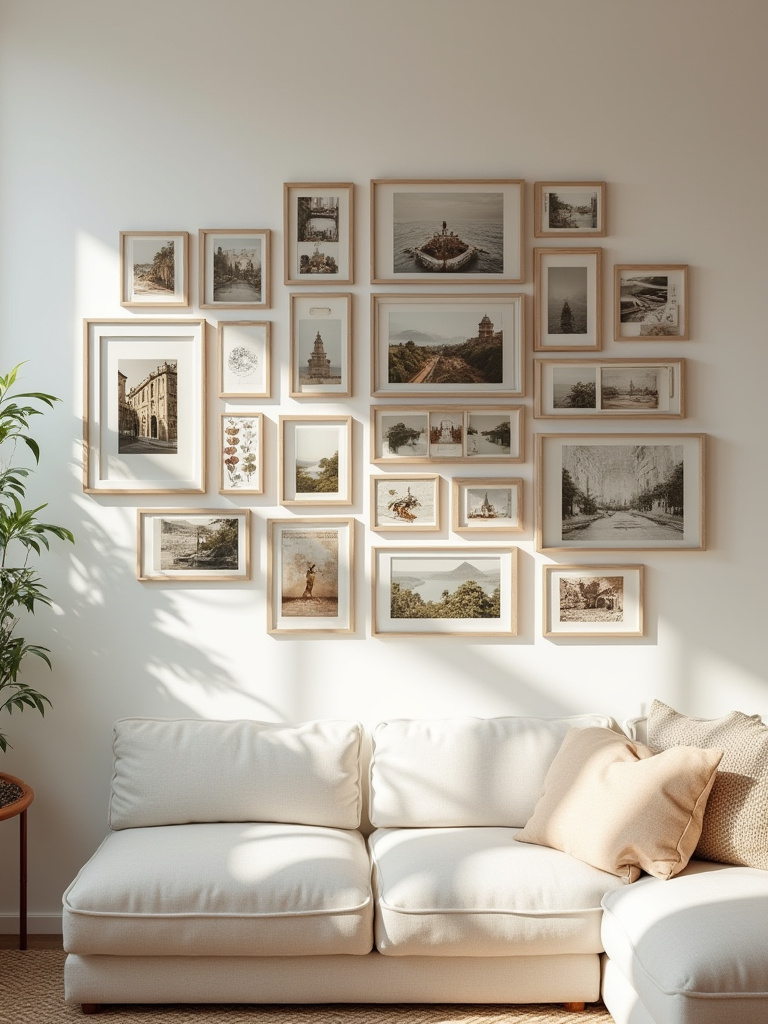
My secret for making them feel elevated? Print them all in black and white. It instantly creates a sense of timelessness and unity, even if the photos were taken decades apart with different cameras. It ties everything together. Or, choose one style of frame for all of them. The consistency of the frames allows the diversity of the photos to shine without creating clutter. It’s about creating order so the story can be heard clearly.
Enhancing Walls with Texture, Lighting, and Depth (Part 1)
Now we get to the advanced magic. This is where we go beyond simply hanging things on the wall and start thinking about the wall itself as a three-dimensional canvas. Lighting, texture, and layering are what create that rich, immersive feeling you get in a beautifully designed space.
12. Apply Accent Wall Paint or Wallpaper to Define Specific Areas
An accent wall isn’t just about adding a “pop of color.” That’s such corporate-speak. At its best, an accent wall creates a destination within a room. It can carve out a cozy reading nook in a large living area or provide a dramatic backdrop for a piece of art. It gives the eye a place to rest and says, “This little spot right here? This is special.”
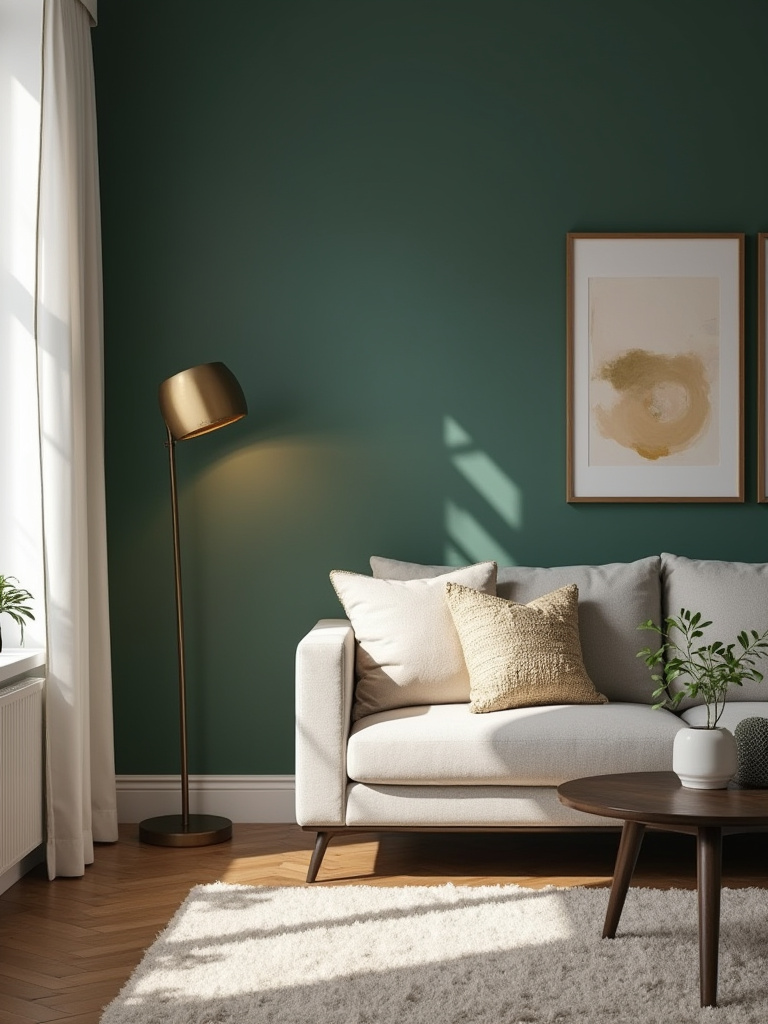
The BS everyone says is to just pick the biggest, most obvious wall. But sometimes, the most powerful accent wall is a small, unexpected one—like the wall behind a single armchair or the sliver of wall you see as you enter the room. I once used a deep, inky blue wallpaper with a subtle gold pattern on the wall behind a client’s bar cart. It instantly turned that corner into a sophisticated little cocktail lounge, giving the whole room a sense of occasion.
13. Install Wall Sconces or Picture Lights for Dramatic Illumination
Good lighting is the secret weapon of every great designer. You can have the most amazing art in the world, but if it’s sitting in a dim, shadowy corner, it might as well not be there. Picture lights are like a spotlight for your art, telling your guests, “Pay attention to this. This piece is important.” Wall sconces add a soft, ambient glow that makes a room feel instantly warmer and more intimate.
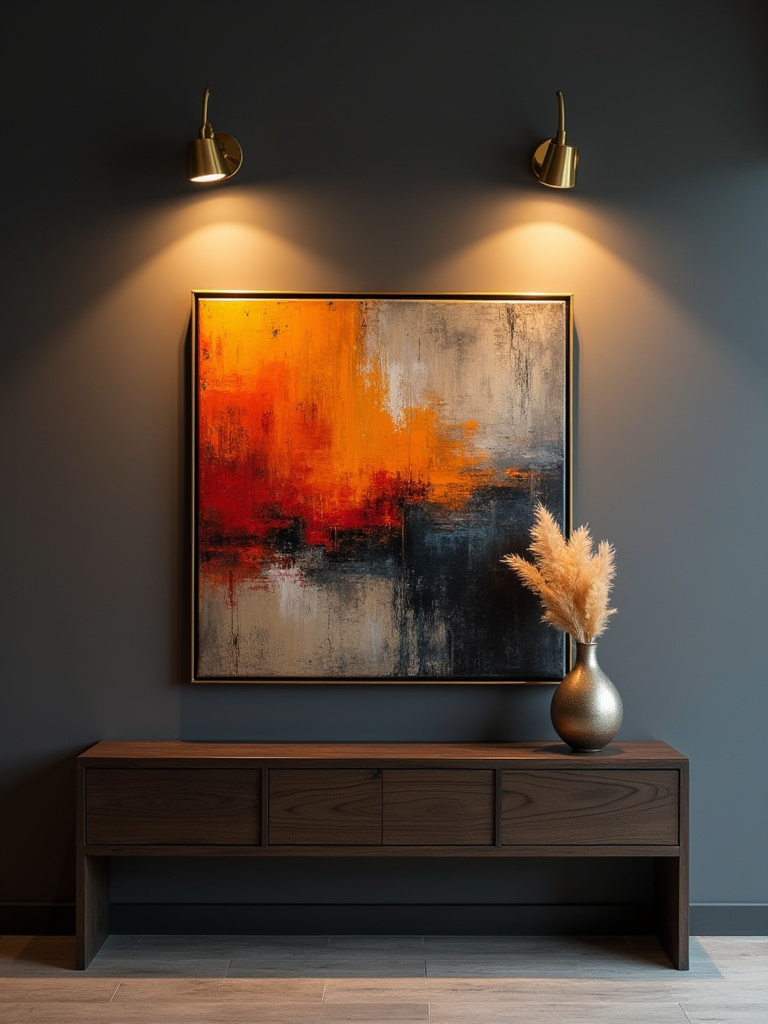
The mistake I see all the time is installing lights that are the wrong “temperature.” That cool, blue-ish LED light can make a warm, inviting painting look sterile and harsh. For living spaces, always look for warm light (around 2700K on the Kelvin scale). It mimics the glow of candlelight and makes everything—and everyone—look better. It’s a small detail that makes a world of difference to the mood of a room.
14. Utilize Floating Shelves to Showcase Collectibles and Greenery
We’ve already talked about shelves for storage, but let’s look at them as purely sculptural elements. Floating shelves, especially when arranged in a thoughtful, asymmetrical pattern, become a piece of architectural art themselves. They are a stage for your most beautiful objects and, crucially, for living things.
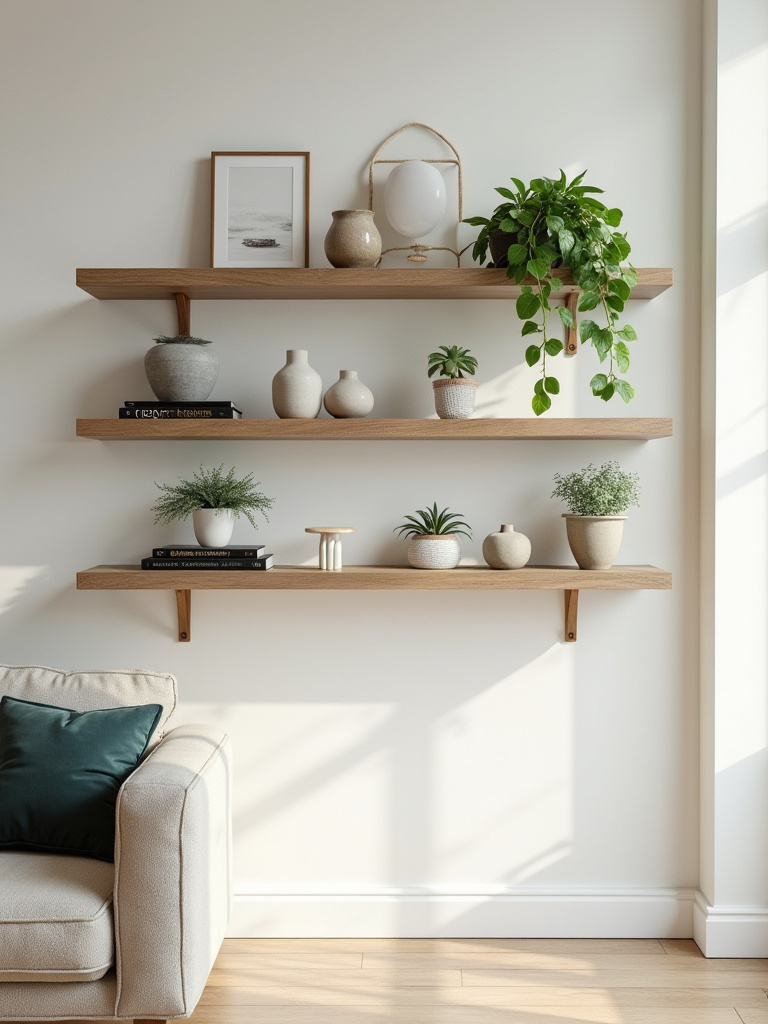
Adding a bit of greenery to a shelf display is a non-negotiable for me. It adds life, organic shape, and a touch of wildness to a structured arrangement. In both Polish folklore and Chinese traditions, bringing plants indoors is about bringing in good fortune and positive energy. A trailing pothos spilling over the edge of a shelf can soften hard lines and make a display feel alive and dynamic, not like a dusty museum exhibit.
15. Experiment with Three-Dimensional Wall Art for Enhanced Depth
Your walls don’t have to be flat! Three-dimensional art is one of my favorite ways to create immediate intrigue. This could be anything from a series of ceramic sculptures to a metalwork piece or a textured fiber art installation. It breaks the plane of the wall and plays with light and shadow in a way a flat painting never can.
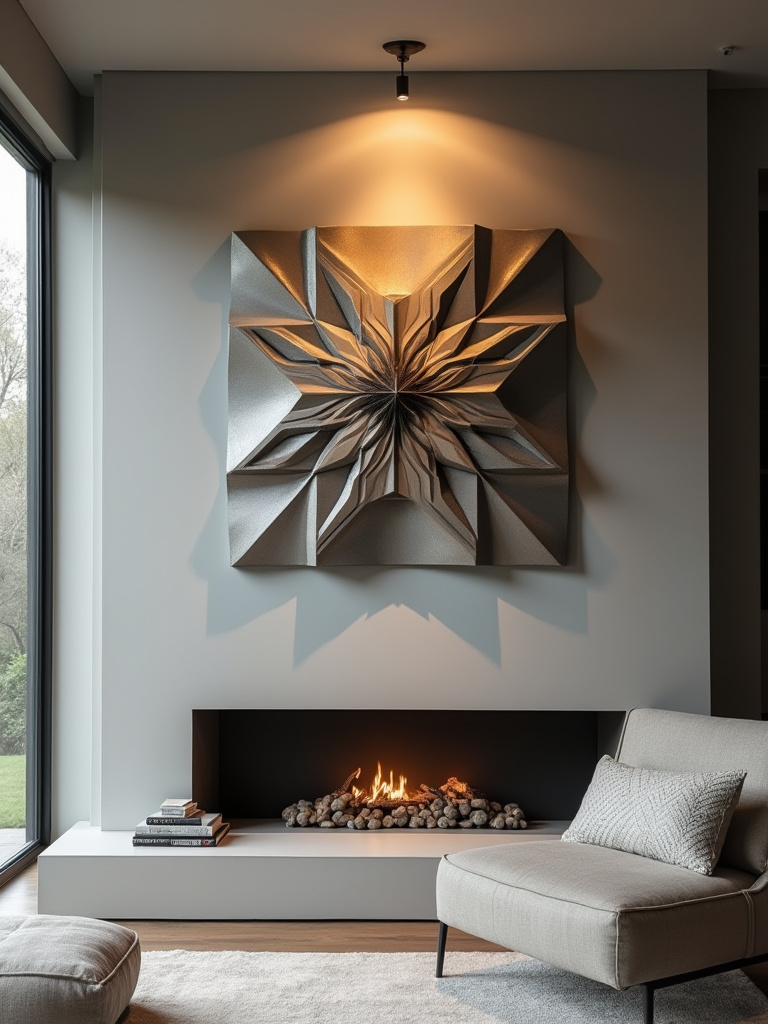
I used to think 3D art had to be some big, expensive sculpture. Then a client showed me a collection of beautifully textured, hand-woven baskets she’d found while traveling. We arranged them in a flowing, organic cluster on her main living room wall. They added incredible depth, texture, and a personal story. It was proof that 3D art can be accessible, meaningful, and a total game-changer for a flat, boring wall.
Enhancing Walls with Texture, Lighting, and Depth (Part 2)
Let’s continue to push the boundaries of what wall decor can be. Moving beyond the purely visual, these next ideas incorporate living elements and unseen forces like sound, transforming your living room into a complete sensory experience that nurtures and restores.
16. Mount Indoor Planters for a Refreshing Touch of Biophilic Design
This goes a step beyond simply putting a plant on a shelf. Creating a living wall, even a small one, is a bold commitment to bringing nature into the very fabric of your home. It’s a concept called biophilic design—the idea that humans have an innate need to connect with nature, and that doing so is essential for our well-being. It purifies the air, softens the space, and creates a focal point that is literally alive.
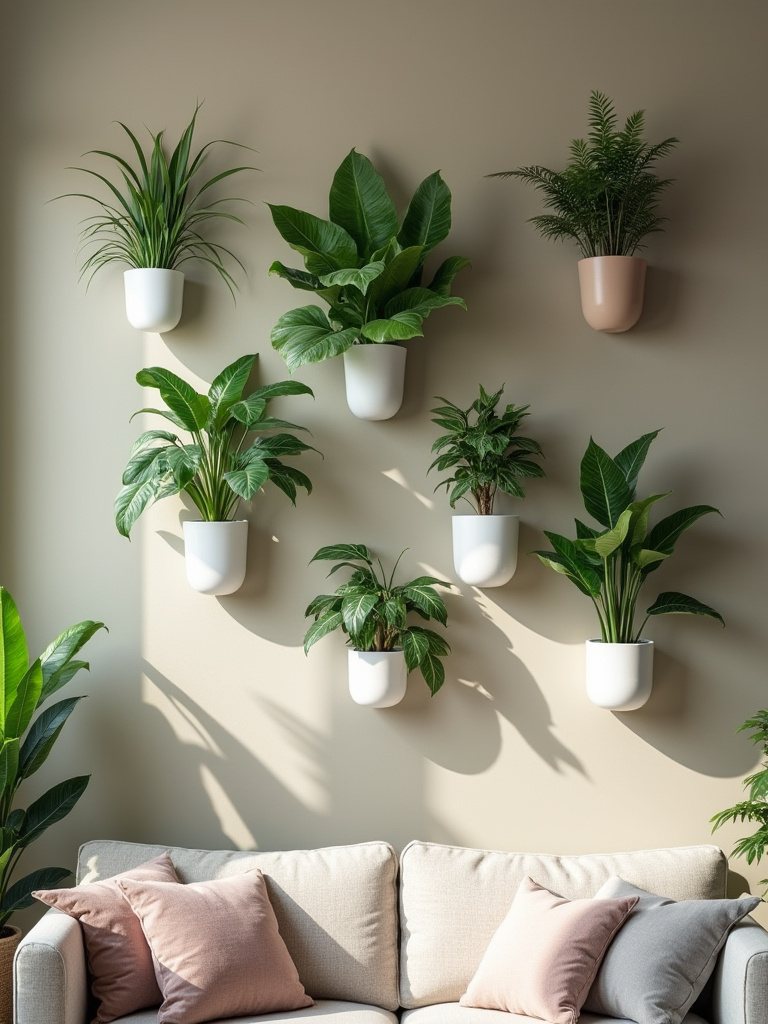
The key to not turning this into a high-maintenance disaster is choosing the right plants and the right system. Start small with a few wall-mounted planters designed for succulents or air plants, which are very forgiving. The shortcut here is to group plants with similar light and water needs together. This simple step makes caring for your living art a joy rather than a chore.
17. Explore Acoustic Panels That Double as Modern Artistic Statements
You know what people always ask me about making their home feel more luxurious? It’s not about expensive furniture. It’s about how it feels and how it sounds. An echoey room with hard surfaces feels cold and unwelcoming, no matter how stylish it is. Modern acoustic panels have become works of art in themselves—they come in incredible shapes, textures, and colors.
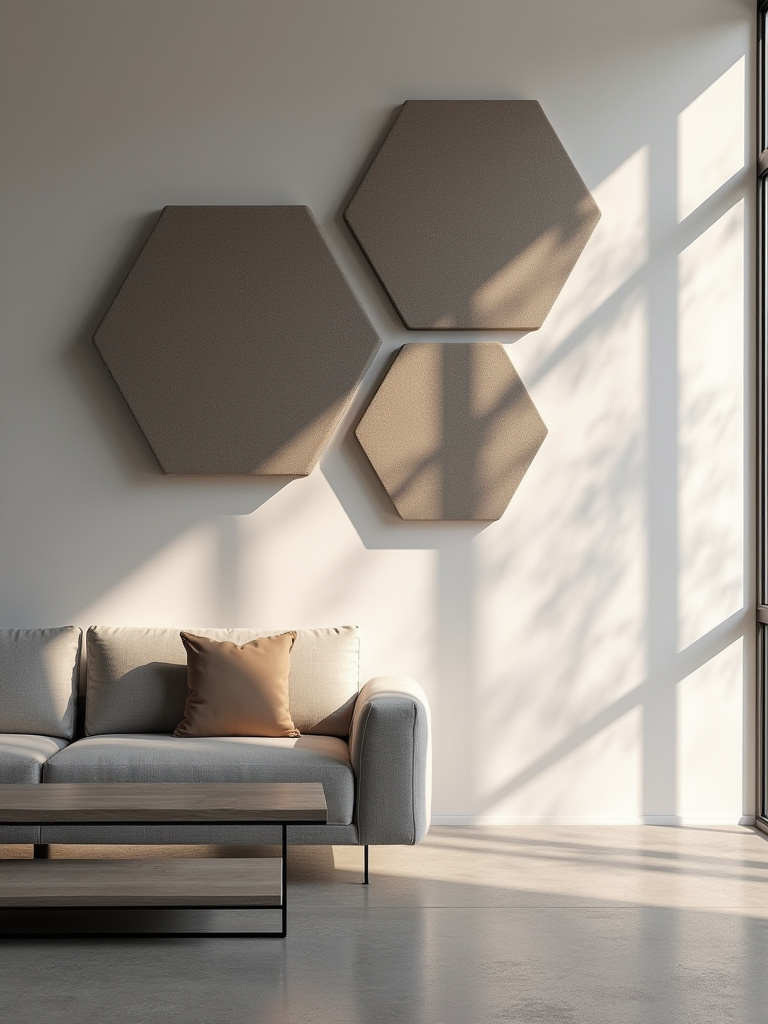
Instead of trying to hide them, celebrate them. A grid of felt hexagonal tiles in a gradient of colors can look like a stunning abstract installation while completely transforming the acoustics of your room. It’s the perfect fusion of form and function. Suddenly, conversations are clearer, movies sound richer, and the whole space just feels calmer and more intimate. It’s an invisible upgrade that has a massive impact on how you experience your home.
Advanced Styling Techniques and Long-Term Optimization (Part 1)
These are the pro-level tips, the little secrets that separate a nicely decorated room from a space that feels harmonious, balanced, and truly designed. They’re subtle but powerful principles that work with the way our brains naturally process visual information.
18. Master the Art of Grouping Odd Numbers for Visual Harmony
There’s a reason designers are obsessed with the “rule of threes” (or fives, or sevens). Grouping items in odd numbers is more visually appealing to the human eye. An even number of items creates symmetry, which can feel formal and static. An odd number creates a bit of tension and asymmetry, which forces your eye to move around the composition, making it feel more dynamic and natural.
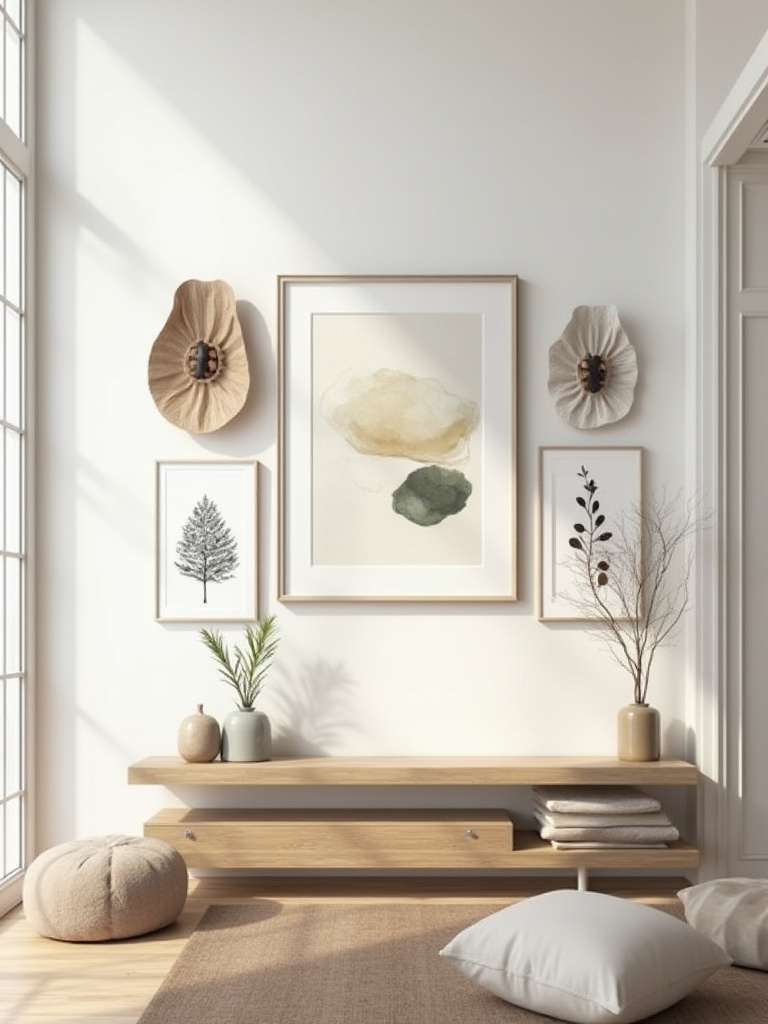
Think about it in nature: things rarely grow in perfect, symmetrical pairs. I learned this principle watching my father practice calligraphy. The balance in a character is never a perfect mirror image; it’s a dynamic balance of different strokes. The same goes for your walls. A cluster of three small prints, a single vase, or a trio of floating shelves feels more organic and intentional than a rigid pair.
19. Rotate Wall Decor Seasonally to Keep Your Space Engaging and Fresh
Your home shouldn’t be a museum where everything is static and unchanging. It’s a living, breathing space that should evolve with you and with the seasons. Rotating your art is one of the easiest, lowest-cost ways to completely refresh your living room. It makes you see your own collection with fresh eyes and keeps the energy in the space from becoming stagnant.
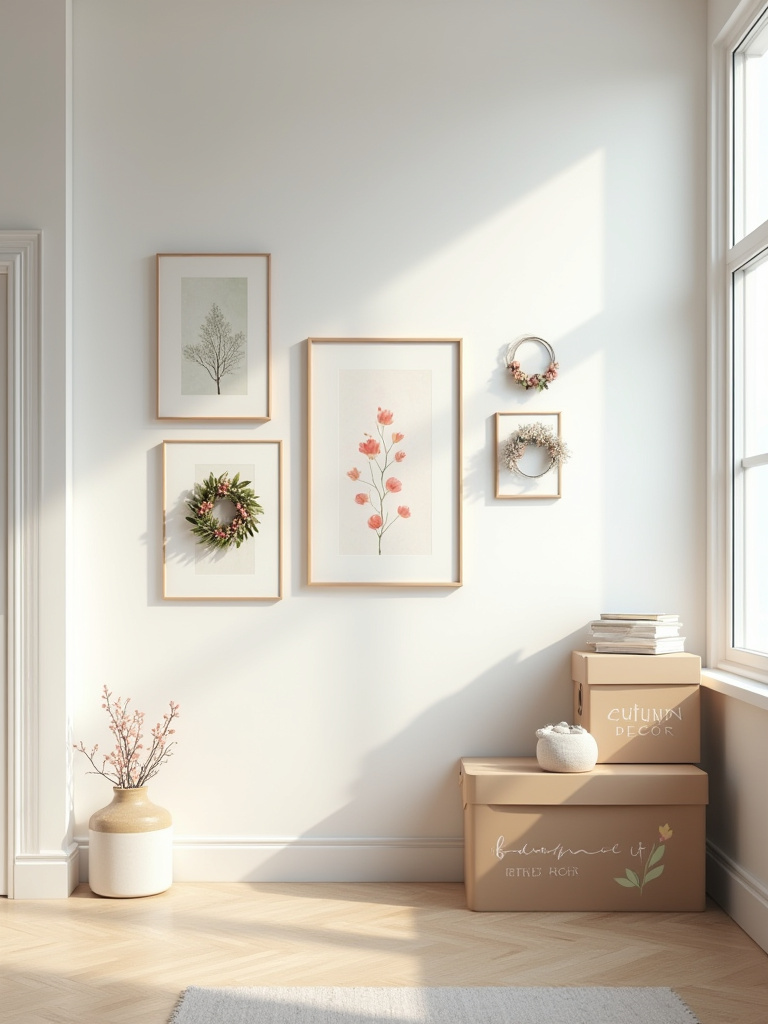
You don’t have to redo everything. Just choose one or two key spots—a gallery wall or the space above the mantel—for your seasonal swaps. In the winter, I might bring out prints with deeper, moodier tones and richer textures. In the spring, I’ll swap in lighter botanicals and brighter colors. It’s a small ritual that connects my home to the natural rhythms of the world outside, and it always makes me fall in love with my space all over again.
20. Employ Professional Hanging Techniques for Secure and Level Installation
Nothing screams “amateur” like a crooked picture. And nothing is more terrifying than hearing a crash in the middle of the night and finding your favorite mirror in a pile of glass on the floor. Using the right hardware for your wall type and the weight of your item is non-negotiable. It’s a matter of respect for your art and for your safety.
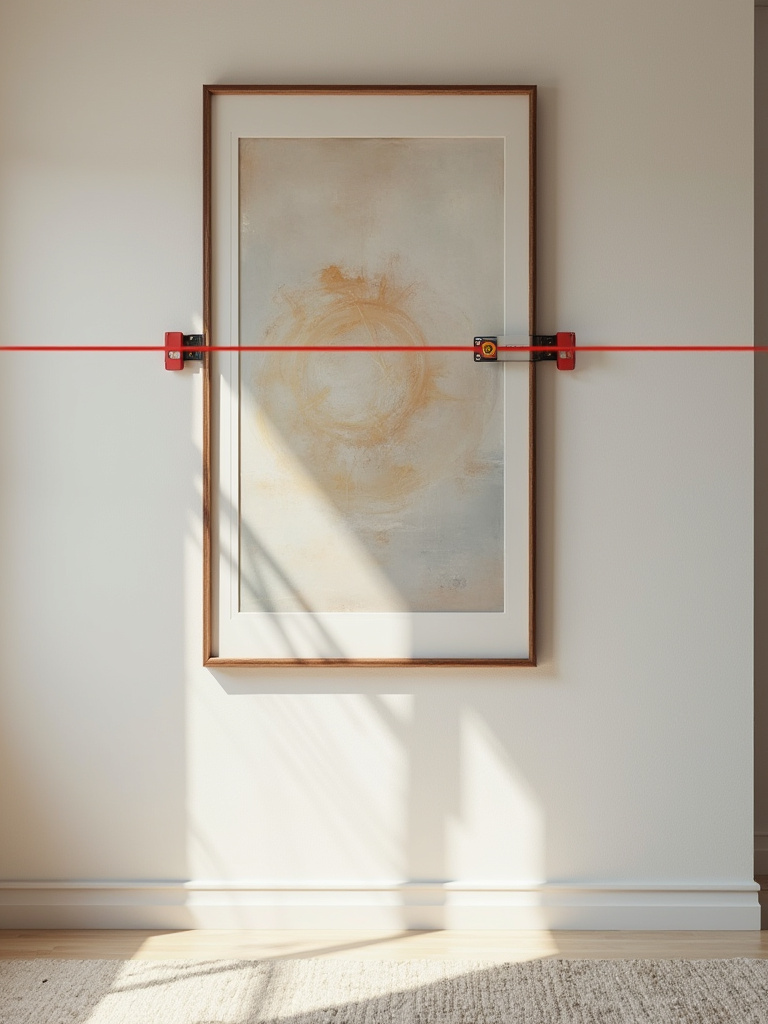
My one non-negotiable tool is a laser level. It feels like a fancy gadget, but it’s an absolute game-changer for hanging gallery walls or multiple pieces in a line. It projects a perfectly straight line across your wall, so you get flawless alignment every time without a million pencil marks. Invest in one. It will save your sanity and make every installation look crisp and professional.
21. Avoid Overcrowding Walls to Maintain a Clean and Open Aesthetic
In both art and design, the space you leave empty is just as important as the space you fill. This is a core principle in so much of Eastern art, from Chinese landscape paintings to Japanese flower arranging. Negative space, or “white space,” gives the eye a place to rest. It allows the objects on display to breathe and to be seen properly.
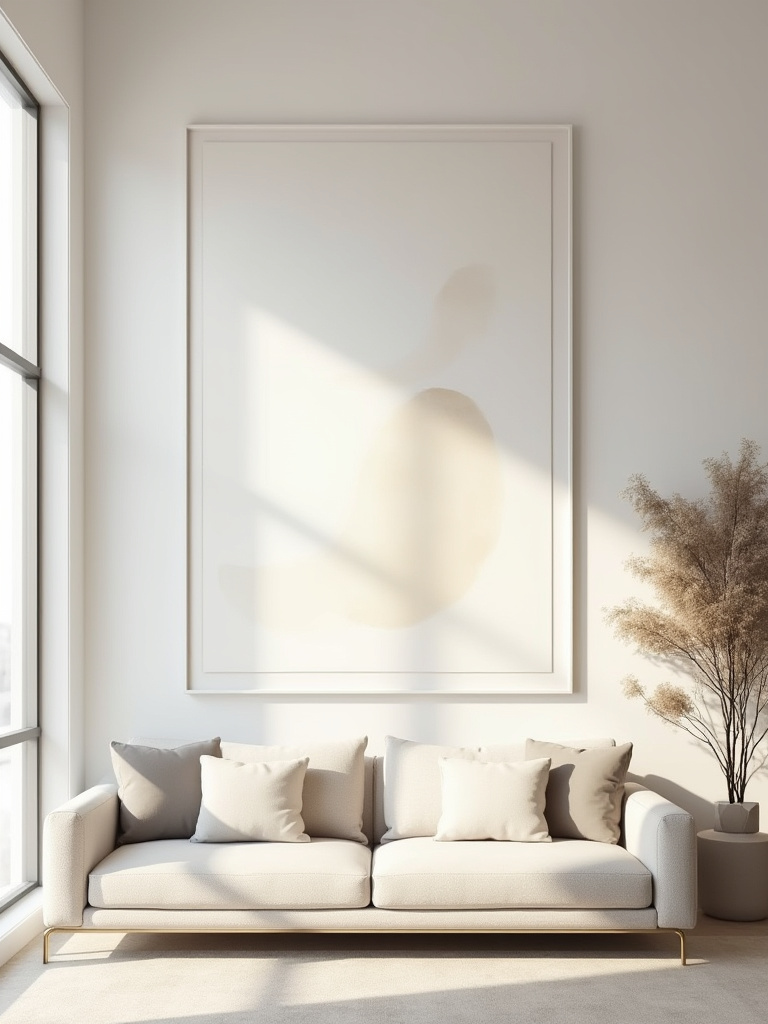
When a wall is too cluttered, everything cancels each other out, and it just becomes visual noise. If you’re struggling with this, take everything off the wall. Everything. Live with the blank walls for a day. Then, slowly add back only your absolute favorite pieces, one by one. Stop when it feels balanced, not when the wall is full. You’ll probably be shocked by how little you need to make a beautiful impact.
Advanced Styling Techniques and Long-Term Optimization (Part 2)
Our final step is about stewardship. The stories on your walls are precious, and caring for them is an act of preserving your own history and the history of the objects themselves. This is about ensuring the beauty you’ve created endures for years to come.
22. Regularly Clean and Maintain Wall Art to Preserve Its Beauty and Value
You wouldn’t buy a beautiful silk blouse and then never wash it. The same goes for your art. A layer of dust can dull colors, and over time, airborne grime can permanently damage the surface of a painting or print. Gentle, regular care is an act of preservation that protects your emotional and financial investment.
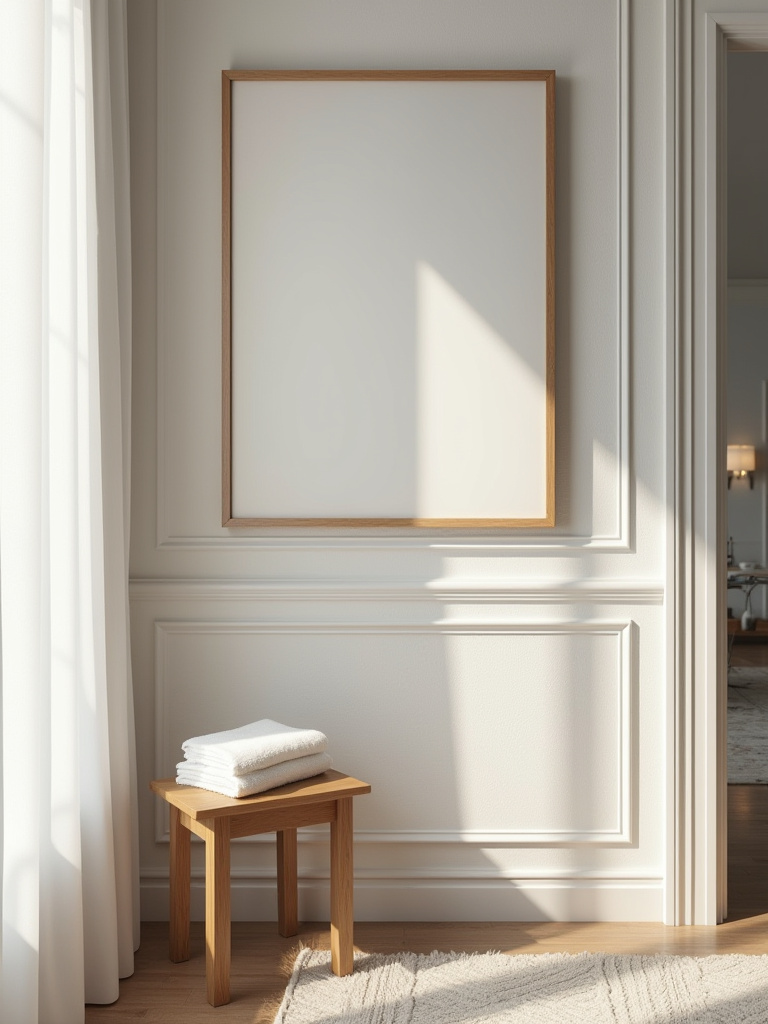
Never, ever spray household cleaner on or near your art. The chemicals can be devastating, especially for works on paper or unvarnished canvases. For most pieces, a gentle dusting with a soft, dry microfiber cloth or a camel hair brush (you can find them in art supply stores) is all you need. Think of it as a small, meditative ritual. As you carefully dust each piece, you’re not just cleaning; you’re taking a moment to reconnect with the story it tells and the reason you fell in love with it in the first place.
Conclusion
There you have it. Your walls are waiting. They don’t want to be sad and beige anymore; they want to be filled with your adventures, your loves, your heritage, and your dreams. Don’t feel pressured to do it all at once. Start with one idea that sparks something in you. Choose one story you want to tell, and find a way to put it on your wall. Your home will thank you for it.
